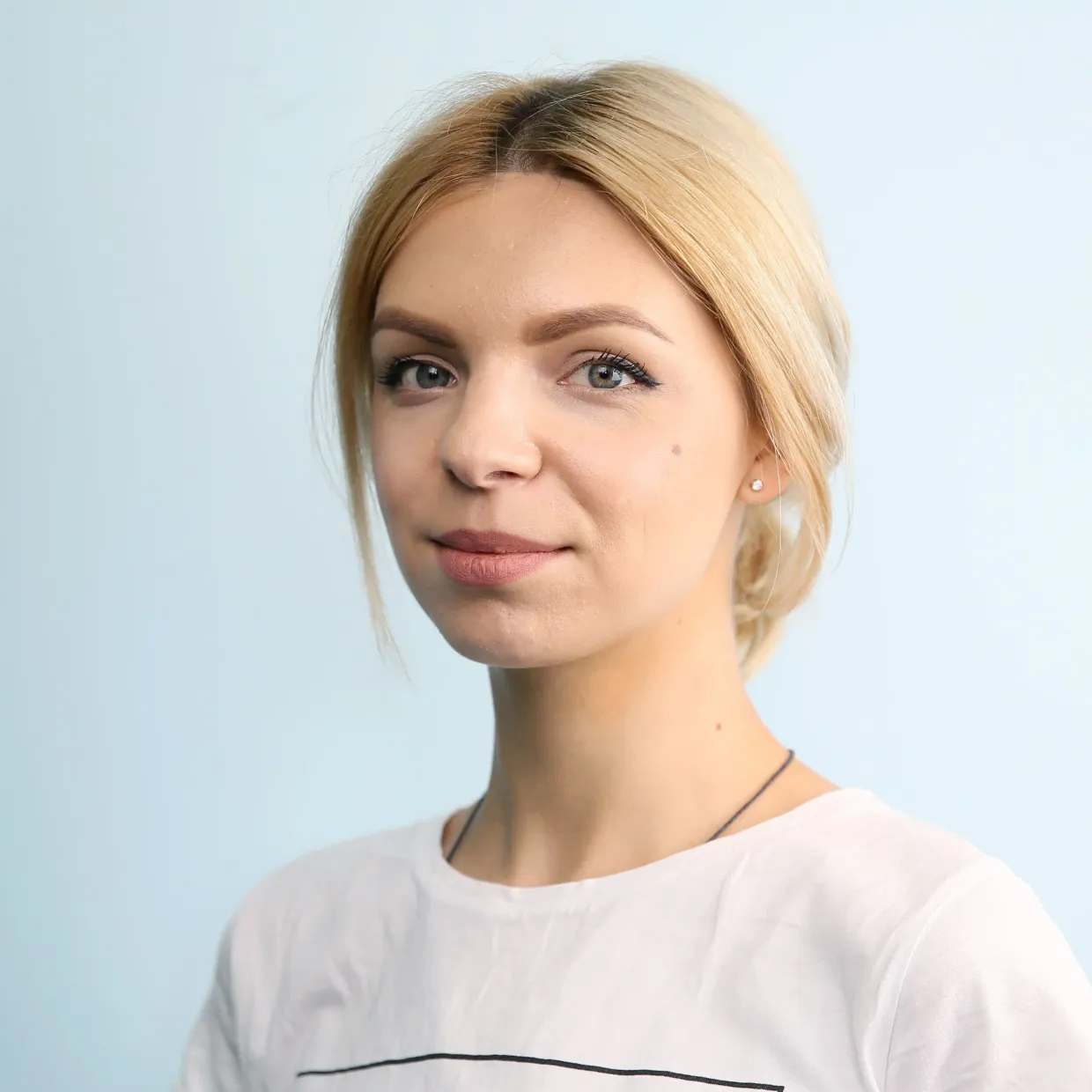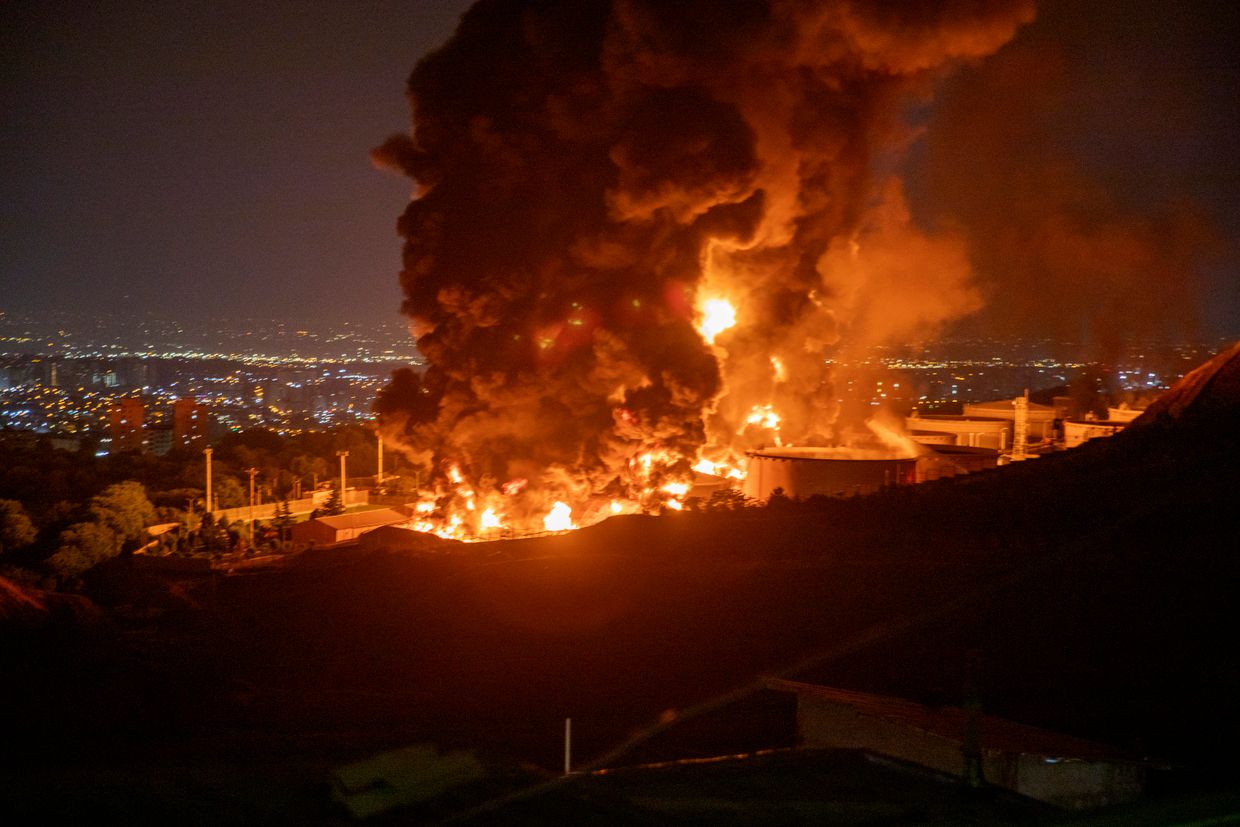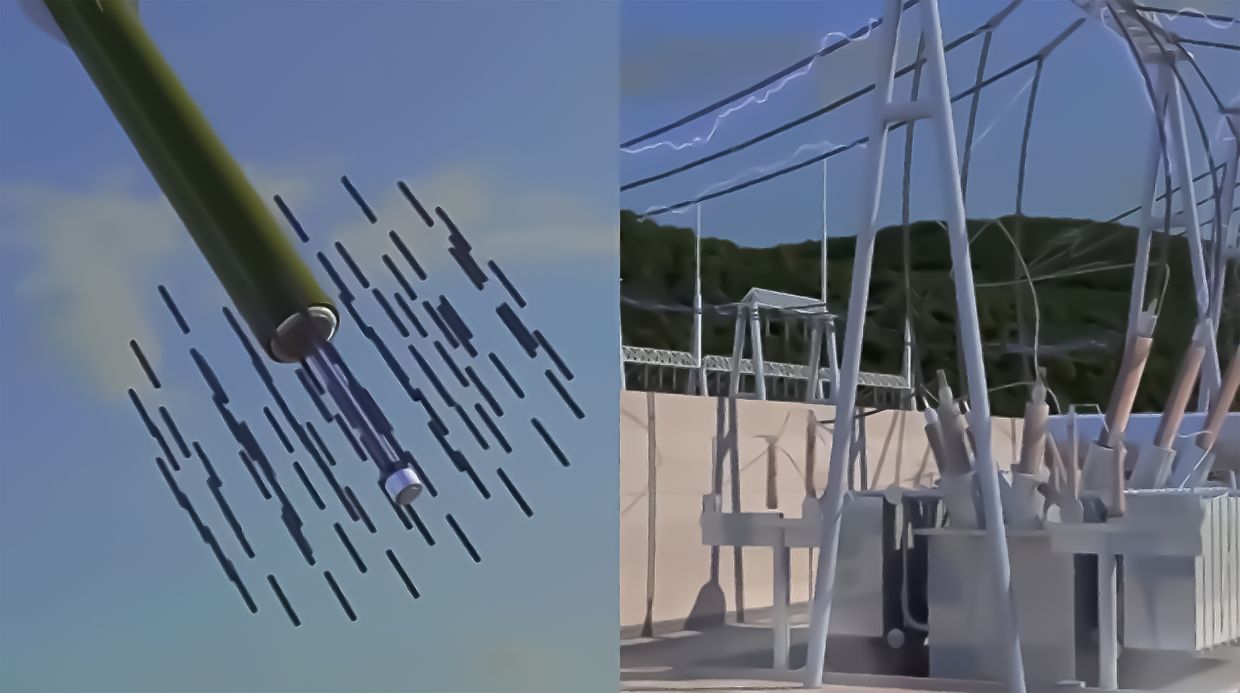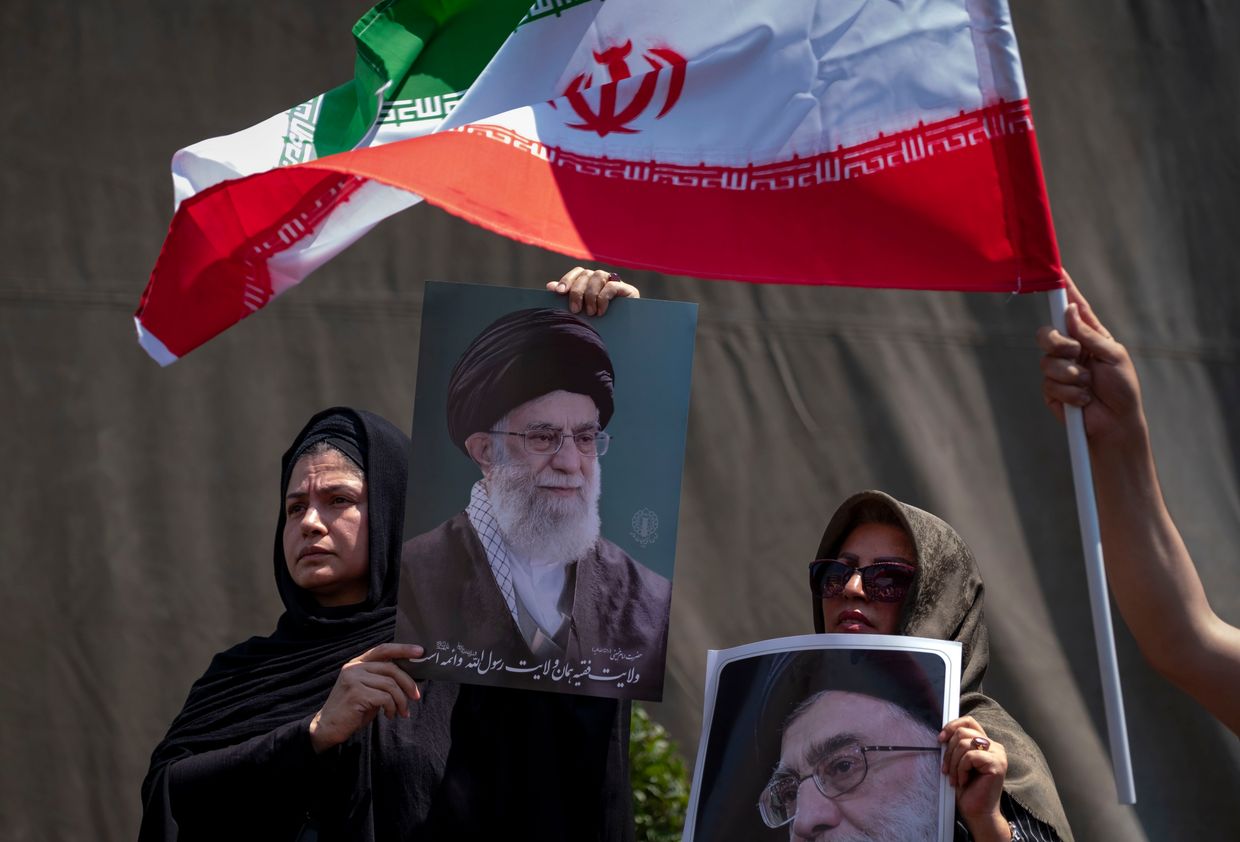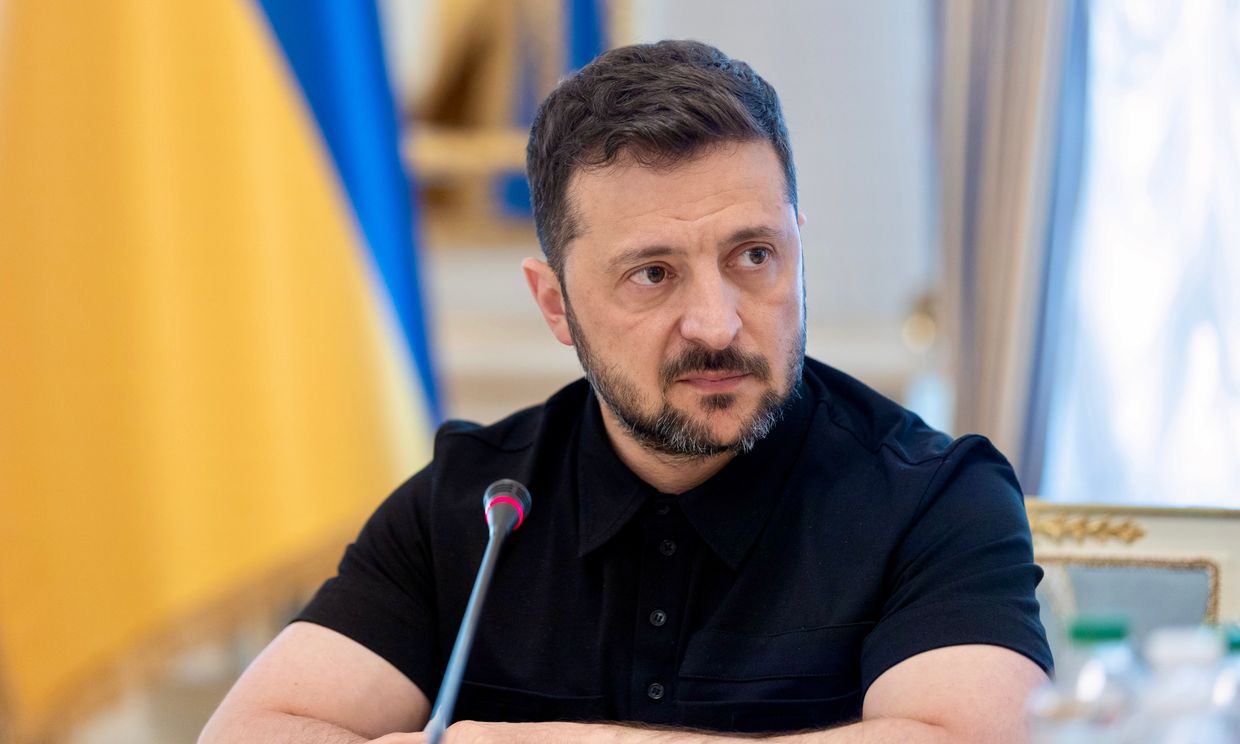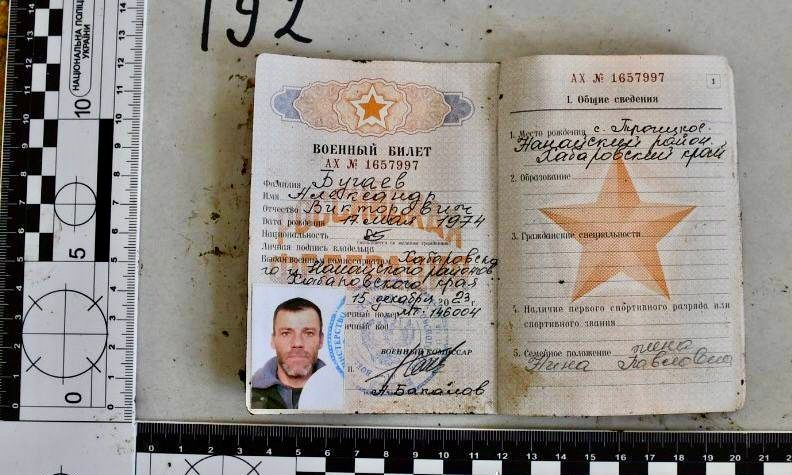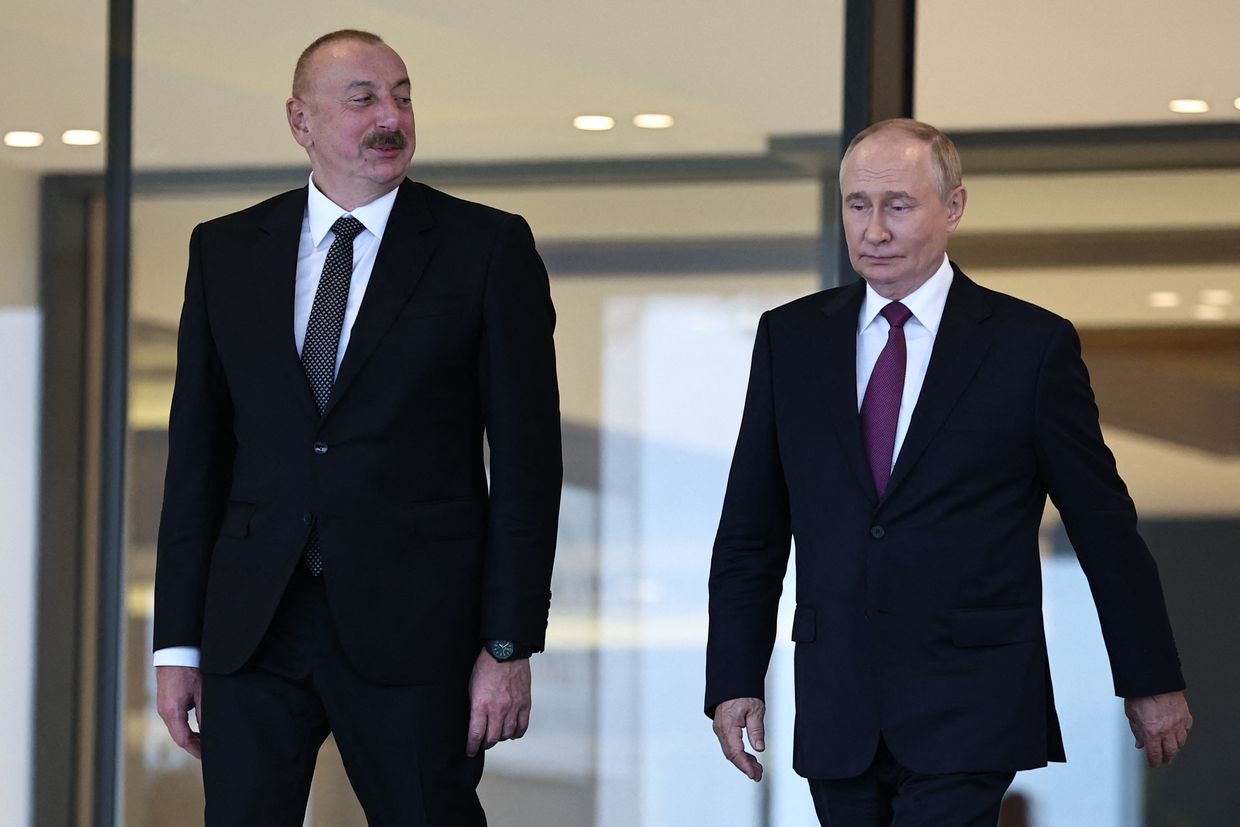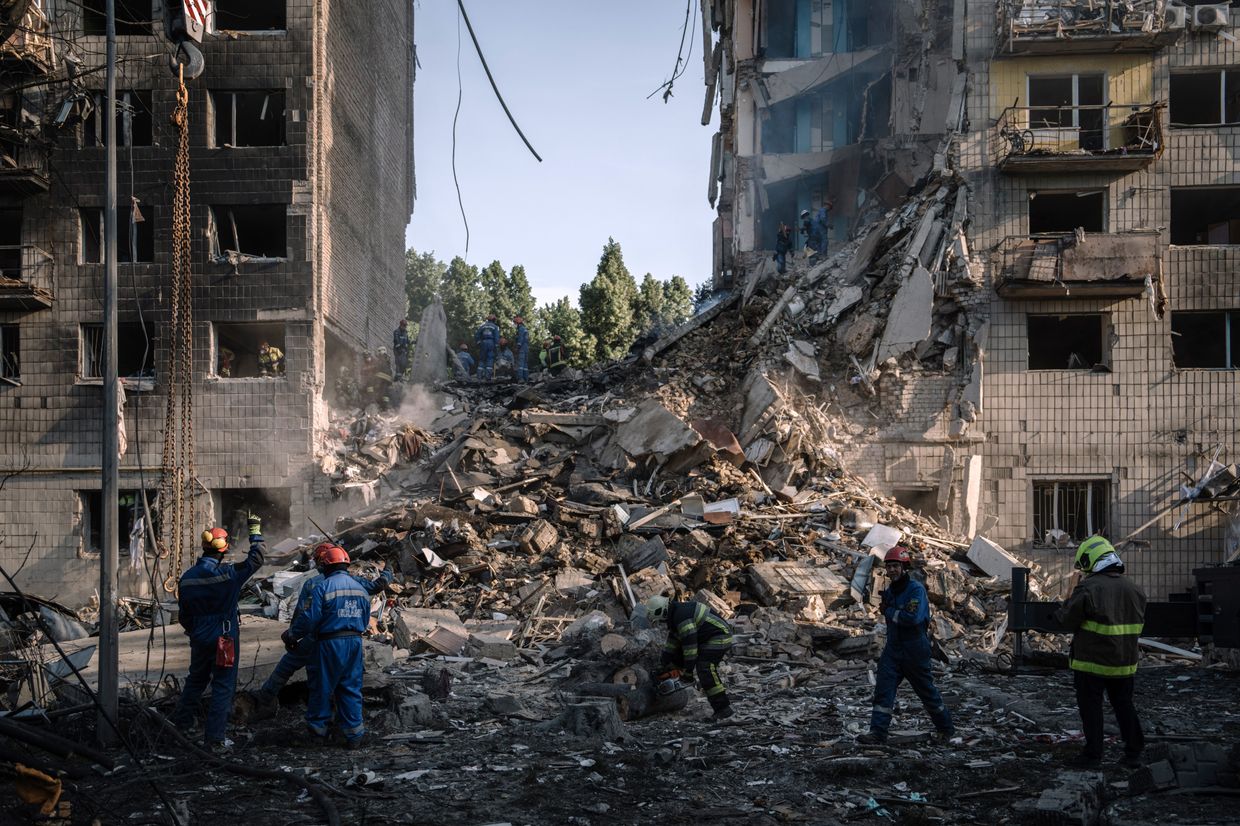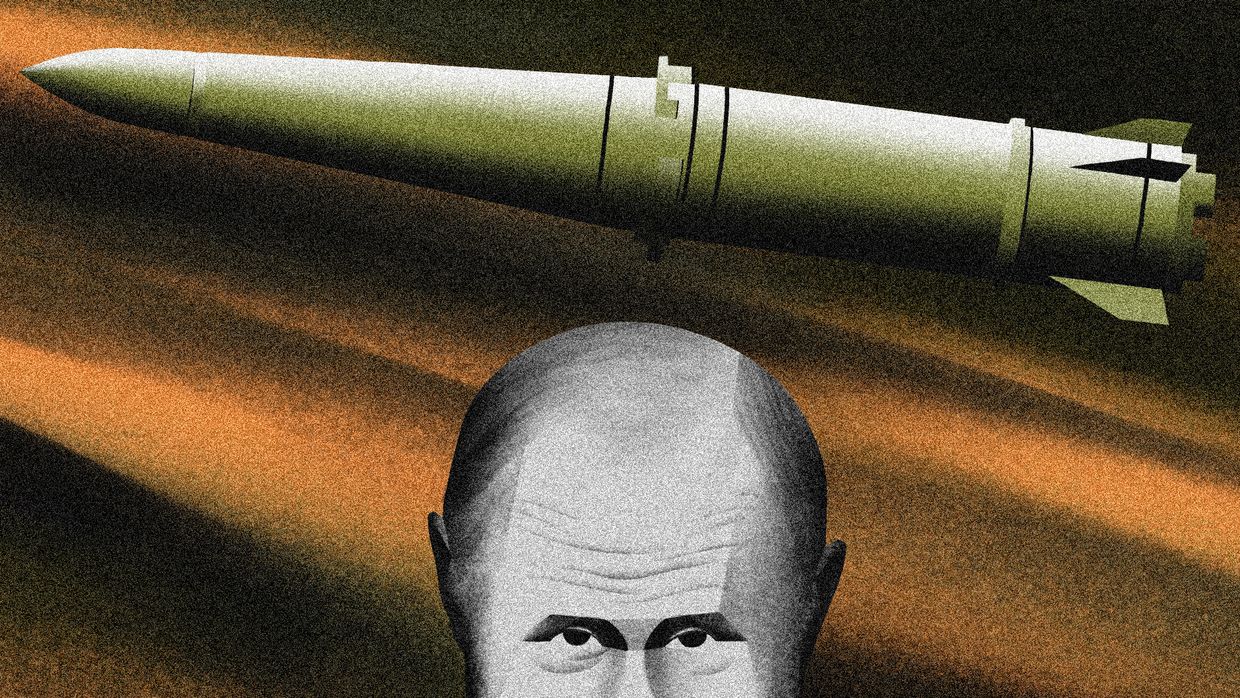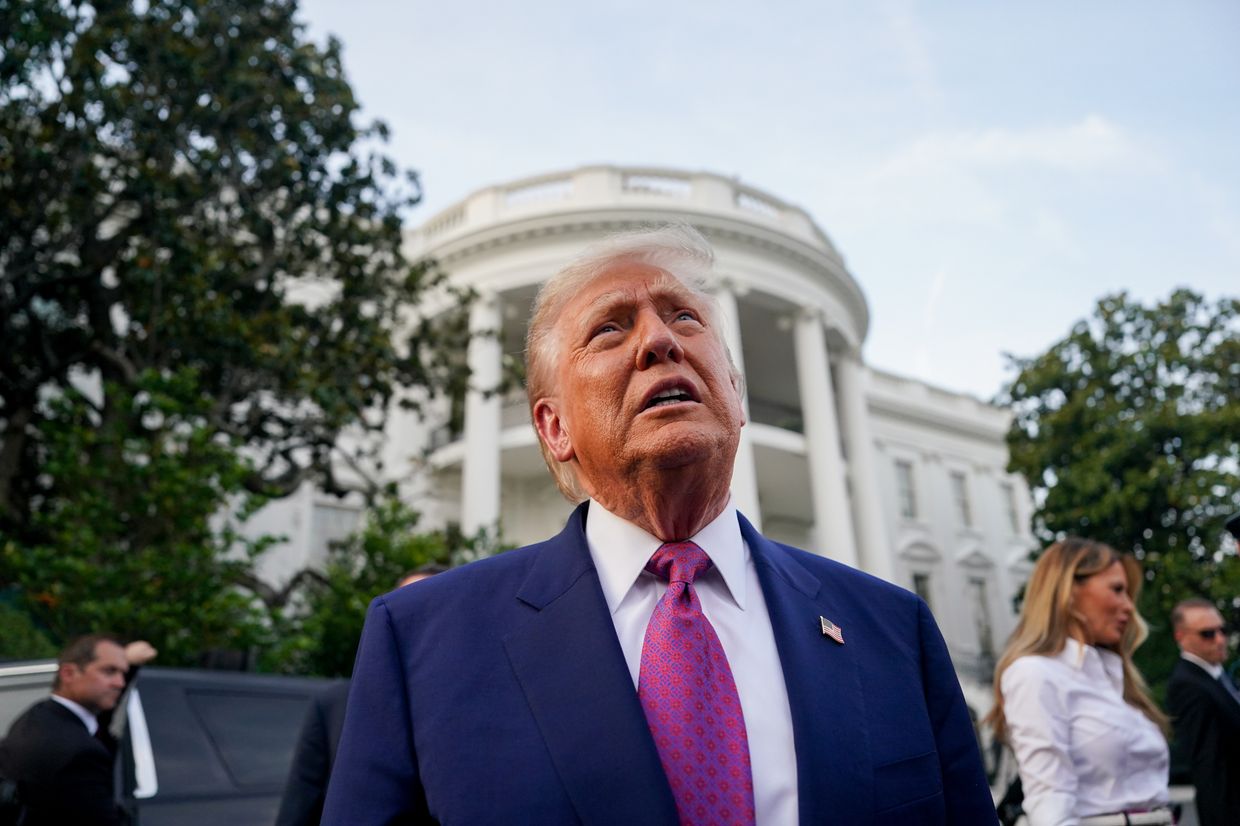Editor’s note: This interview has been edited and condensed for clarity.
While hiding from almost non-stop Russian bombardment in the dark and cold bunkers of the Azovstal steel plant in Mariupol, Dmytro Kozatskyi took his most famous and arguably most valuable photographs.
He showed the world what it was like to survive in the place Russian troops relentlessly attacked in the early days of the full-scale invasion.
Widely known by his call sign "Orest," Kozatskyi, 28, is a Ukrainian soldier and photographer who formerly headed the press service of the Azov regiment.
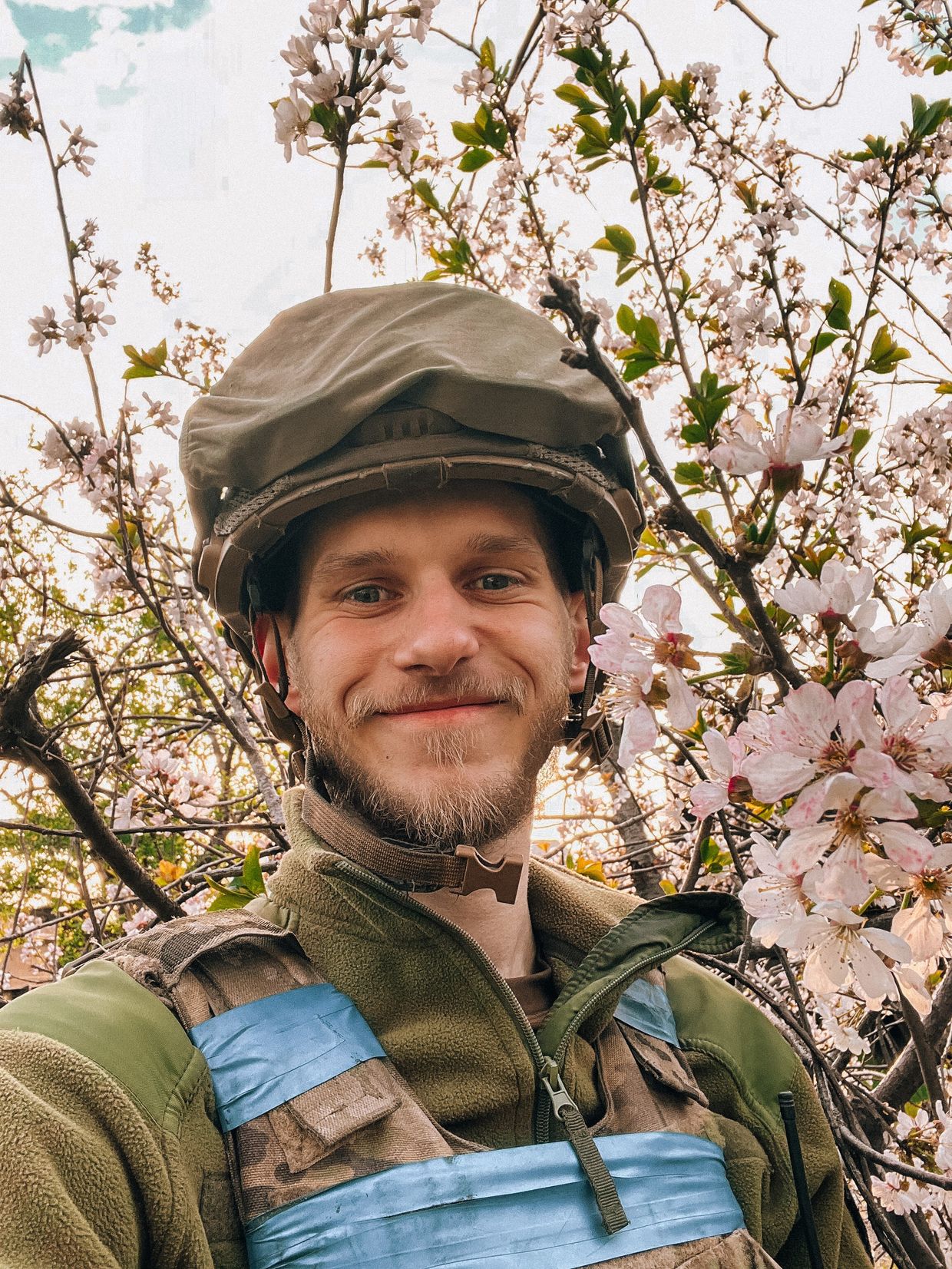
Originally from the Zhytomyr region, Kozatskyi was based in Mariupol when Russia launched its full-scale invasion of Ukraine in February 2022. He documented Russia’s brutal offensive against Mariupol, soon ending up at the last Ukrainian stronghold in the city — Azovstal plant.
Kozatskyi’s photographs and videos from Azovstal showed the world how soldiers and civilians had to endure heavy Russian attacks living in the bunkers of the plant, with little to no food and medicine.
On May 16, 2022, Azovstal defenders were ordered to surrender to the encircling Russian forces. Four days later, Kozatskyi, alongside other soldiers, was taken prisoner and brought to Russian-occupied Donetsk.
Kozatskyi returned home in a major prisoner exchange on Sept. 21, 2022. But hundreds of Azovstal defenders still remain in captivity.
The Kyiv Independent spoke with Kozatskyi about his world-famous photographs from Azovstal, the Russian assault on Mariupol, and the four months he spent in Russian captivity.
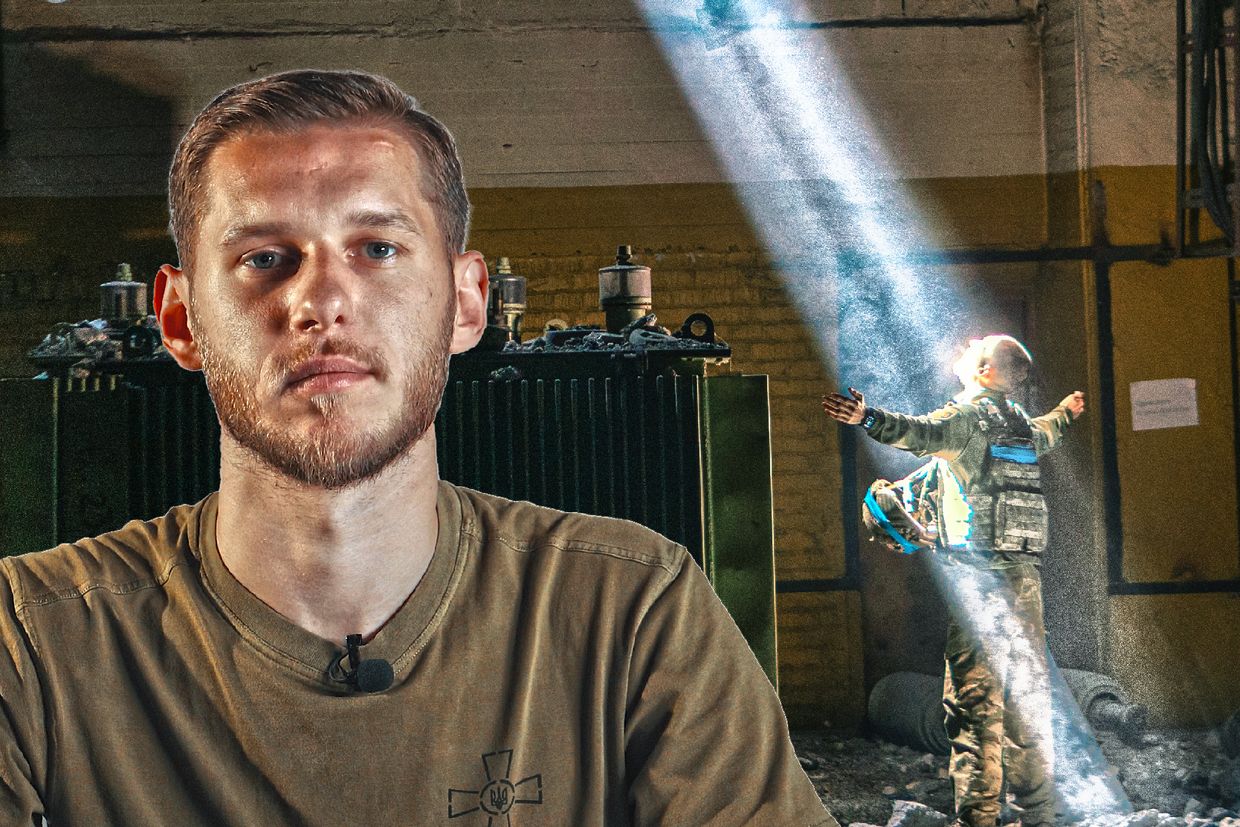
Photo in the makeshift hospital
“This is one of the Azovstal bunkers, which housed a makeshift hospital for the wounded. There was another hospital, the main one, but it was hit several times by bombs. Here are two soldiers who, it seems, came for a check-up…They have amputated limbs.”
“When I came to the hospital, I saw that there were a lot of guys with amputated limbs. Even if it had been just one person, it would still have been extremely unfortunate because I know how these amputations were performed. There was very little medicine. There were very little or, at times, no anesthetics at all. These amputations were performed on guys without anesthesia. And that's why every wound brought a lot of pain for a long time because there were no painkillers, the doctors simply couldn't give them because there were none…”
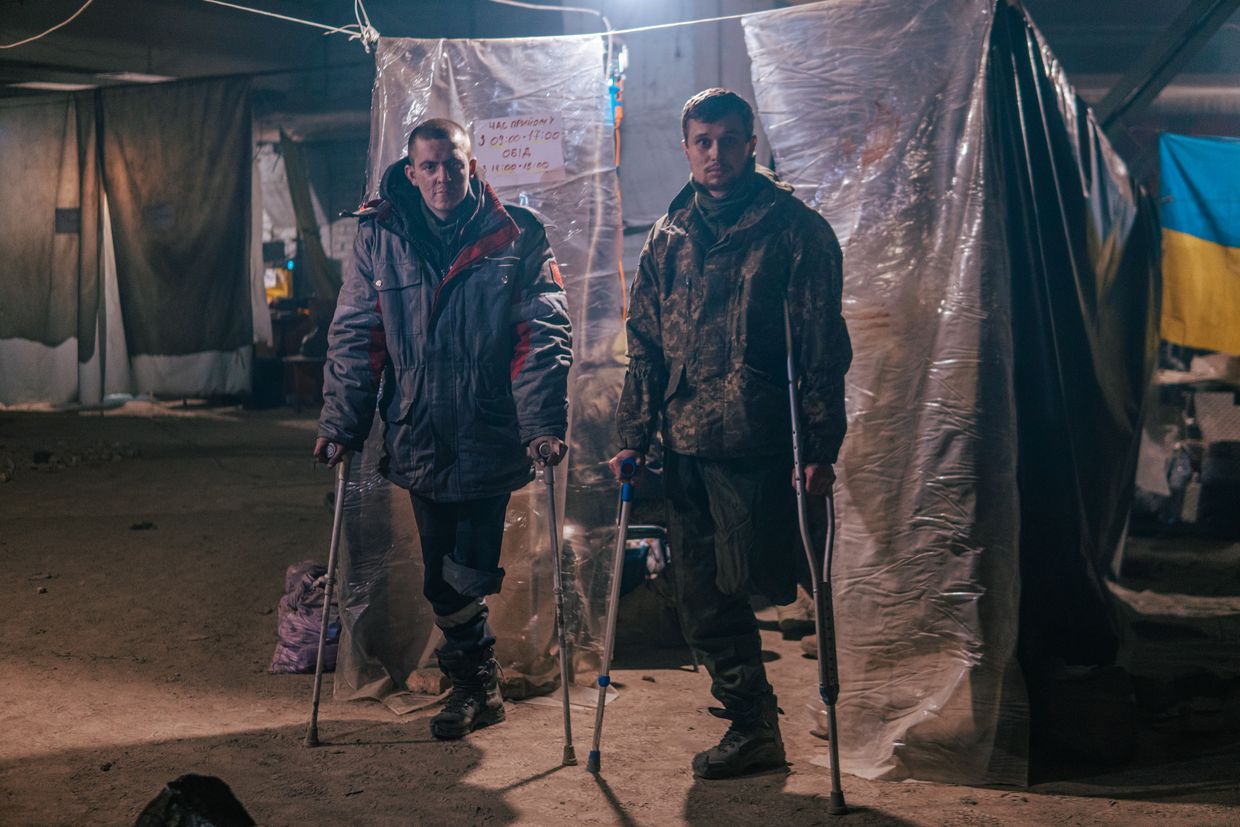
Nava’s photo in the bunker
“This photo was taken in the bunker we called the Source. Because it was a very large room, it was quite cold there.”
“So the service members who lived there lit small fires to warm themselves near them, to dry some laundry, and cook food.”
“If you look at this photo, you can see that it is quite warm… It’s now quite symbolic for me that this photo is as warm as my attitude towards (Azov regiment service member, Valeriia Subotina) "Nava" because I love her very much, and I appreciate our friendship that continues too, despite everything.”
“She married her partner on the anniversary of the creation of the Azov regiment. I remember that I even took their wedding photographs in the bunker. And, unfortunately, a few days later, he was killed by the Russians.”
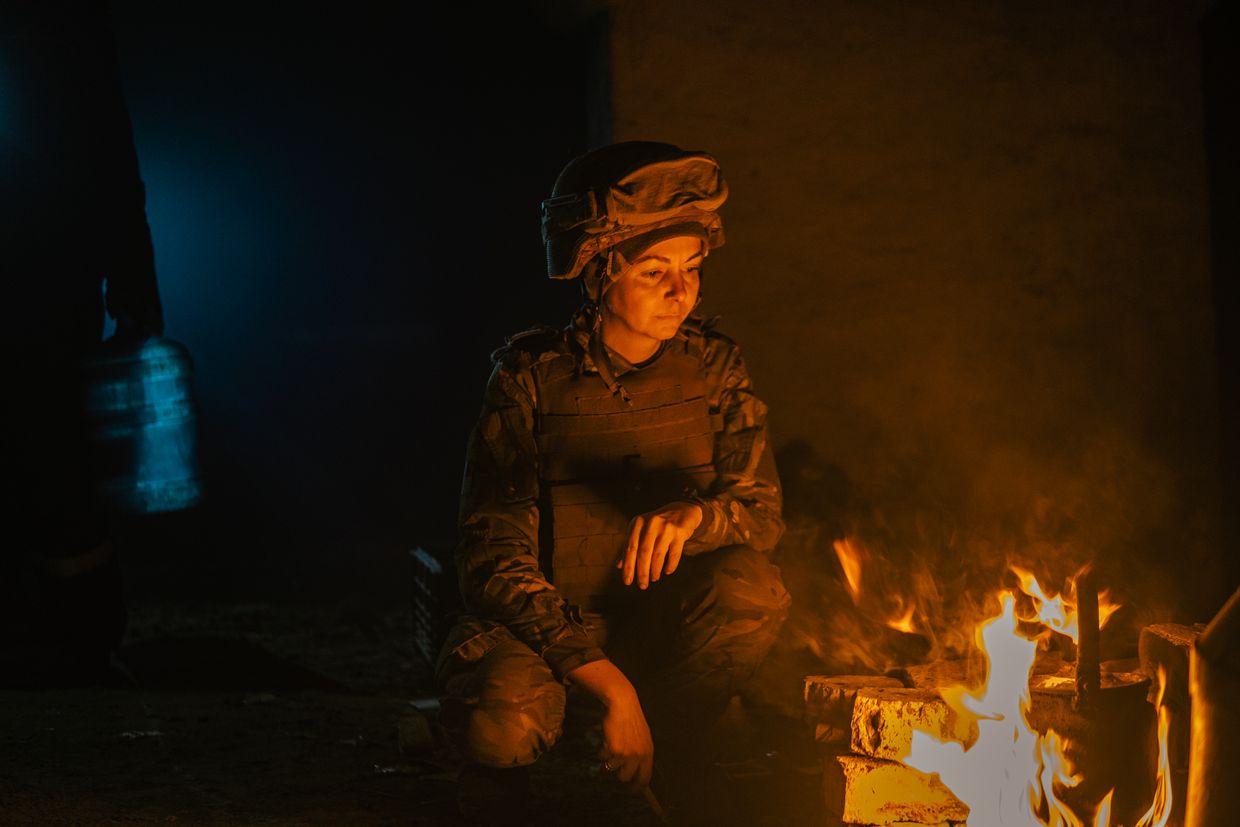
“The light will win”
“This is a self-portrait… I was walking alone from one bunker to another and I had a camera with me. And since I remembered this ray of light that I saw earlier, I decided to capture it with me in the shot.”
“There was one sunny day, and the light was coming through this hole. And since there was always dust in these bunkers, it rose when someone passed by.”
“When I took it, I didn't post it right away; it stayed with me for a few days because I was waiting for a special occasion because, for me, this photo is quite symbolic. I posted it on the day when we got the news that there would be an evacuation of military personnel to save lives. That’s what they called it back then. I understood it meant we would end up in captivity… But for me, at that moment, that was good news because the enemy was getting closer and closer. They were already on the territory of Azovstal.”
“I am glad that these photos are used to draw attention to the prisoners of war, to draw attention to the courage of the defenders of Azovstal and Mariupol. However, for me, these are not some photos that evoke some warm, pleasant memories. This is more about pain.”
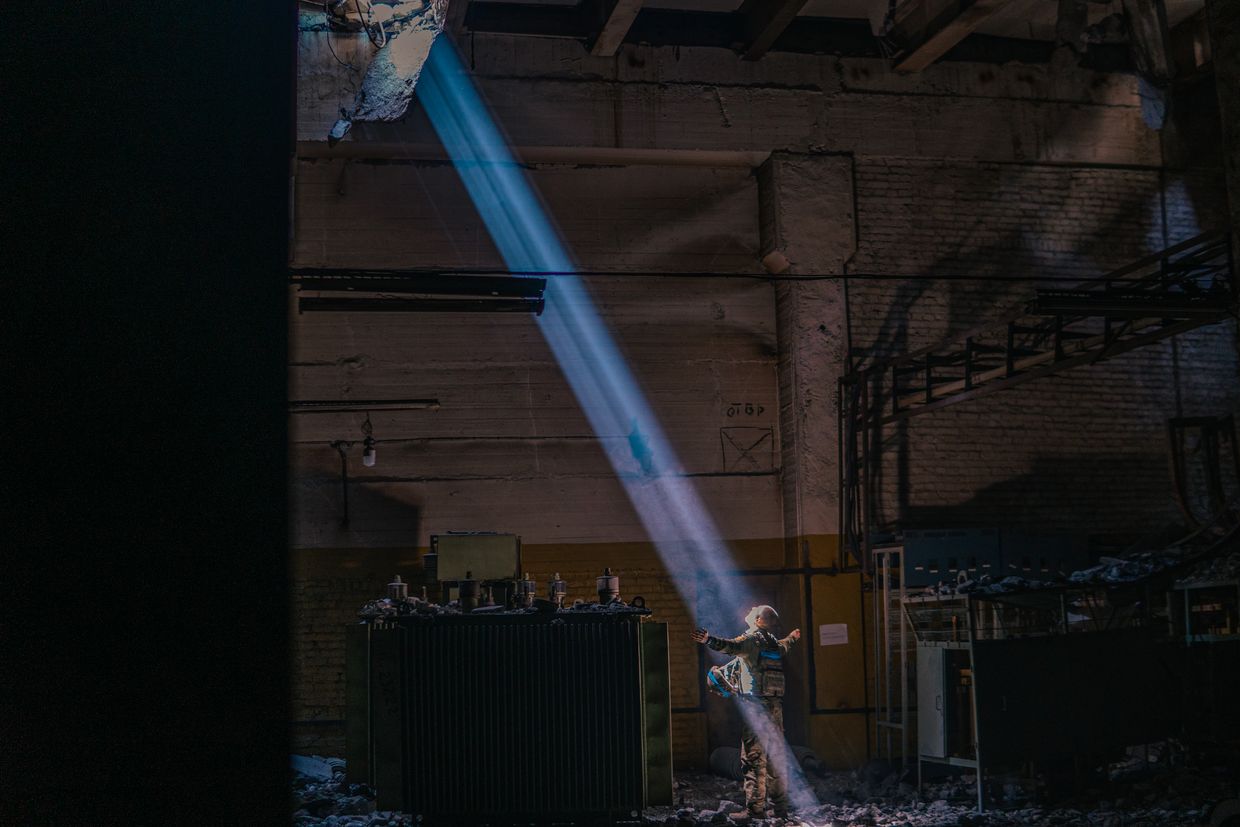
The Kyiv Independent: At the time when you were taking these photographs did you understand how important they would be for the people inside the plant and for the world?
Dmytro Kozatskyi: We didn’t realize that the photos we took one day would make such an impact. Because I understood that both civilians and Mariupol defenders died there literally every day. And in general, extremely terrible things were happening. Do people need any more confirmation of all this? As it turned out, yes, and the photos became a certain visual symbol.
Many attribute all kinds of things to me, like some kind of heroism. And to be honest, I really don't like it. Because this was just my job.
The Kyiv Independent: What was the atmosphere like at Azovstal when you first relocated there and how did it change over time?
Dmytro Kozatskyi: In the first days, it was very interesting to see what it looked like inside and what was happening there overall… Later, we began to notice changes as the strikes were getting closer and closer, and we had to go down to the bunker more often. At that time, it still wasn’t a familiar place for us.
There were quite a few of those really dark days, but several are etched in my memory… On April 15, an aerial bomb hit our bunker and ruined the premises where a lot of my brothers-in-arms lived. My good friend died there… I realized I was lying on the floor amidst the rubble. I felt blood streaming down my head.
I saw my brother-in-arms, who was dying. They were trying to save him, but unfortunately, he died. It was the first dark memory that stands out in my mind… And those everyday routines constantly became darker and darker.
The Kyiv Independent: How did you react to the order for the military personnel from Azovstal to surrender?
Dmytro Kozatskyi: For me, it was good news back then… I think it was the right decision because even though soldiers are now in captivity, there is a chance to get them back alive. Yes, Russians destroy lives in captivity; they break the psyche, but at least that can be restored through hard work. You can not do anything if a person is dead. I thought then and still do now that it was the right decision.
It was a bit naive at the time, of course, but then I realized that not everything was as good. And this evacuation is not exactly an evacuation. Not everything went as planned.”
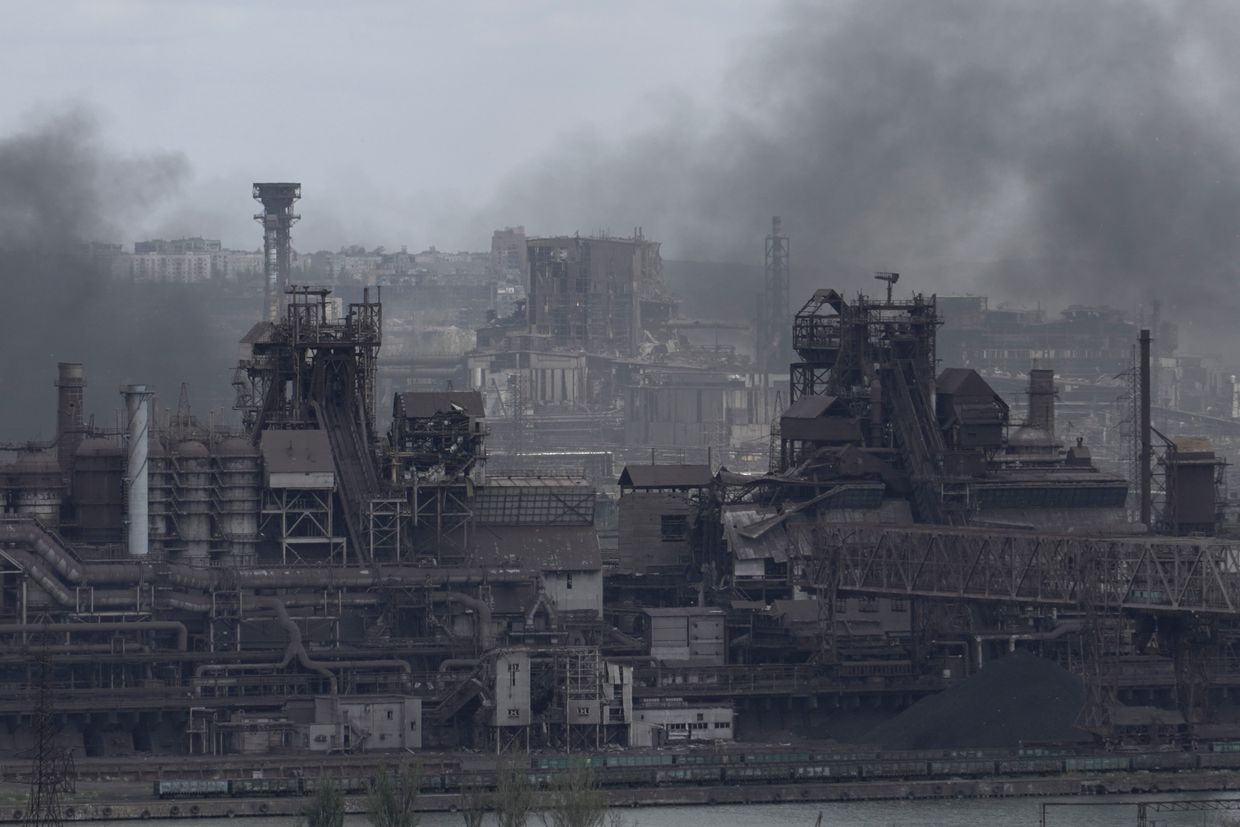
The Kyiv Independent: You were held at the infamous prison in the Russian-occupied Olenivka and then in the detention center in Donetsk. Can you describe the conditions there?
Dmytro Kozatskyi: (In Olenivka) we lived in small barracks with about 30 people (in each)... They would give us food at 3 a.m., sometimes at 1 a.m. Later, they started giving it more consistently at fixed time, but it was still not enough, and we were constantly thinking about how hungry we were. Looking back, I understand that food is a manifestation of freedom and choice. When you live in Kyiv, you can eat whatever you want. There, they take away basically any right to choose, the right to move, and the right to freedom.
While in Olenivka, it was at least possible to talk with brothers-in-arms, but in the Donetsk detention center, we could only whisper to each other, and everyone had to be very careful.
The Kyiv Independent: You were in Olenivka camp when an explosion occurred killing 57 POWs and injuring over 100 on July 29, 2022, in what Kyiv called a deliberate Russian war crime. You said that until then, there was hope that everyone would survive and return home. Did it affect your confidence in the exchange?
Dmytro Kozatskyi: Part of my brothers-in-arms were killed, so obviously, my faint hopes that everyone would return alive from captivity were shattered… In Olenivka, you realize that you have to just endure it and return home, but then your brothers-in-arms and your friends die. It was very painful, even more painful than (the death of fellow soldiers) in Azovstal.
We all understand that Russia follows no rules and that it can kill anybody on its territory, especially those it hates.
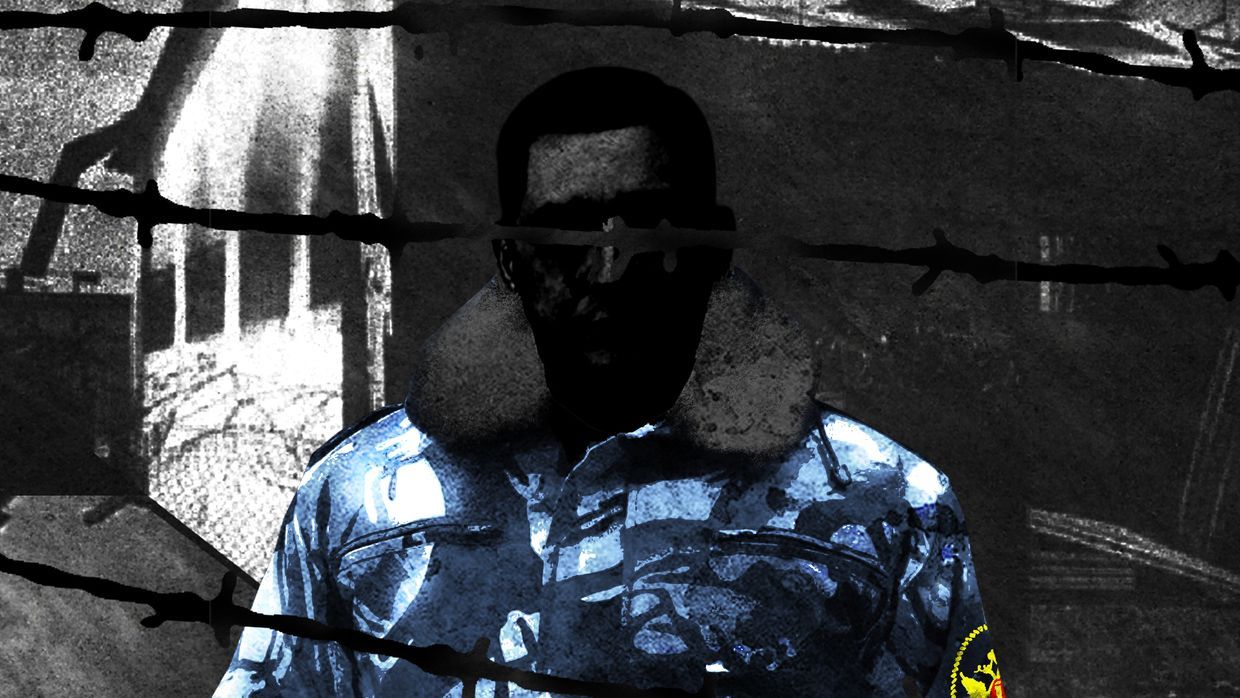
The Kyiv Independent: How do you cope with the loss of fellow soldiers now?
Dmytro Kozatskyi: It’s very painful. I went to the funeral of (fallen soldier and activist) Pavlo Petrychenko… It is heartbreaking to see how such promising Ukrainians are dying now, losing their own future and the opportunity to change the future for all of us Ukrainians. The same with “Hrinka” (Nazarii Hryntsevych, one of the youngest soldiers who defended Azovstal who was recently killed on the front line). A young Ukrainian who was very active and very cool. We were brought home in the same exchange, and we were in neighboring wards in the hospital afterward, I got to know him better there. He was an incredibly pleasant person, someone who could have done amazing things in Ukraine and in the world. Unfortunately, he won't be able to do that.

The Kyiv Independent: Over 8,000 Ukrainians remain in Russian captivity. Every Sunday, thousands of Ukrainians rally to bring attention to this issue, and you photograph almost every rally in Kyiv. What role do you think these rallies play in returning our prisoners?
Dmytro Kozatskyi: Firstly, it's the support of families waiting for their loved ones to return from captivity because when such a large number of people gather, relatives understand that they are not alone in these struggles, that Ukrainians support them, and that they are not forgotten.
When POWs return, they can see the photographs and realize that every week, thousands rallied across Ukraine to bring them back. This is when Russian propaganda messages (that POWs are no longer needed in Ukraine, etc.) shatter… That’s also part of adaptation (for former POWs), when you understand that this country needs you, that people need you, even those you don’t know.
Note from the author:
Hi! Daria Shulzhenko here. I wrote this piece for you. Since the first day of Russia's all-out war, I have been working almost non-stop to tell the stories of those affected by Russia’s brutal aggression. By telling all those painful stories, we are helping to keep the world informed about the reality of Russia’s war against Ukraine. By becoming the Kyiv Independent's member, you can help us continue telling the world the truth about this war
